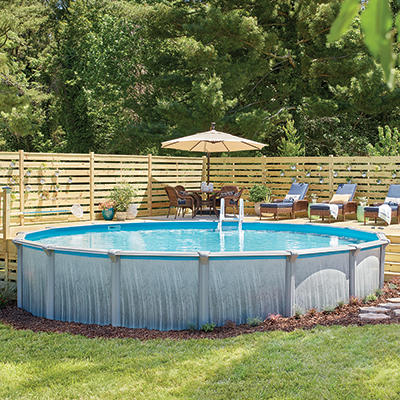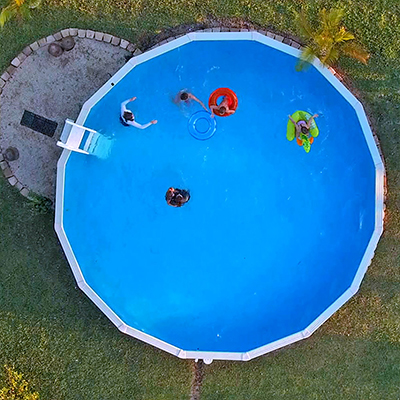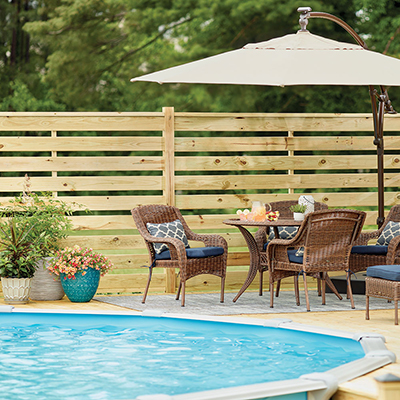How to Install a Pool Pump

Last updated September 7, 2023
A pool pump is the heart of a swimming pool. Pool pumps keep water circulating and filter out dirt and debris to ensure the pool remains clean and sparkling. But pool pump motors may not last more than 10 years before needing replacement.
This guide reviews how to install a pool pump when an old one needs to be replaced or upgraded.
Difficulty:
Advanced
Duration:
Over 1 day
Table of Contents
How to Remove an Old Pool Pump
How to Wire a Pool Pump
How to Install a Pool Pump
Pool Pump Repair Tips
How to Remove an Old Pool Pump
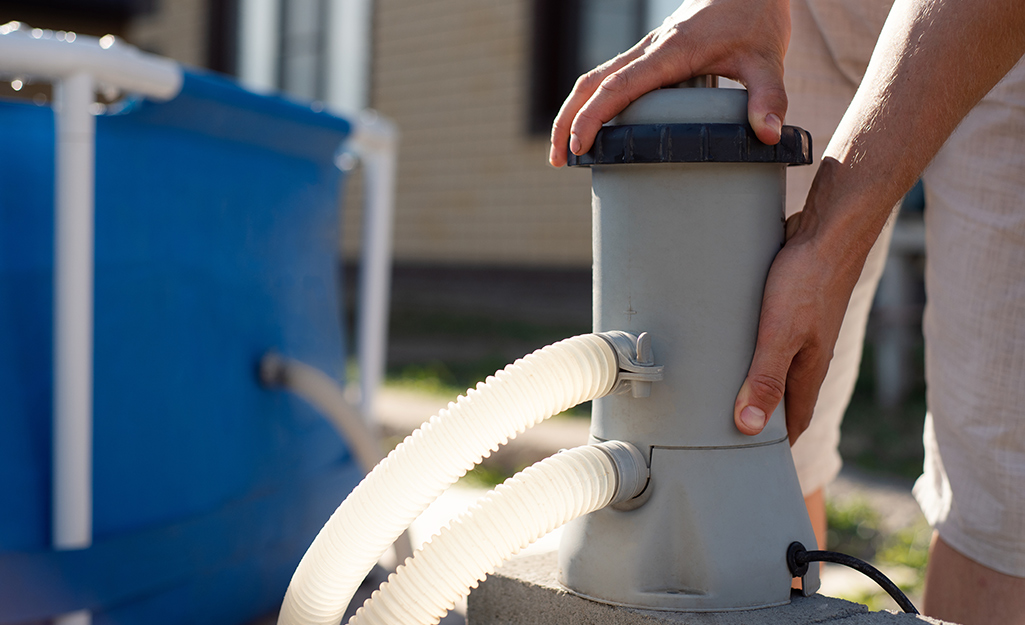
Before installing a pool pump, you’ll need to remove the old one.
- Disconnect the power to the pool, ideally at the circuit breaker.
- Shut off the water valves to the inlet and outlet pipes, if needed.
- Open the pump’s pressure release valve to relieve any pressure and then close the valve.
- Use a non-contact voltage tester to make sure the power is off. Use needle nose pliers or a nut driver to detach the incoming wires from the old pool pump.
- Detach any bolts that secure the pump in place. You may need these bolts to secure the new pump. Set the bolts aside in a convenient location.
- Use a PVC pipe cutter to disconnect pipes to and from the front inlet and back discharge port of the old pump. Leave enough pipe intact to attach a union or other fitting.
- Remove the old pool pump.
How to Wire a Pool Pump
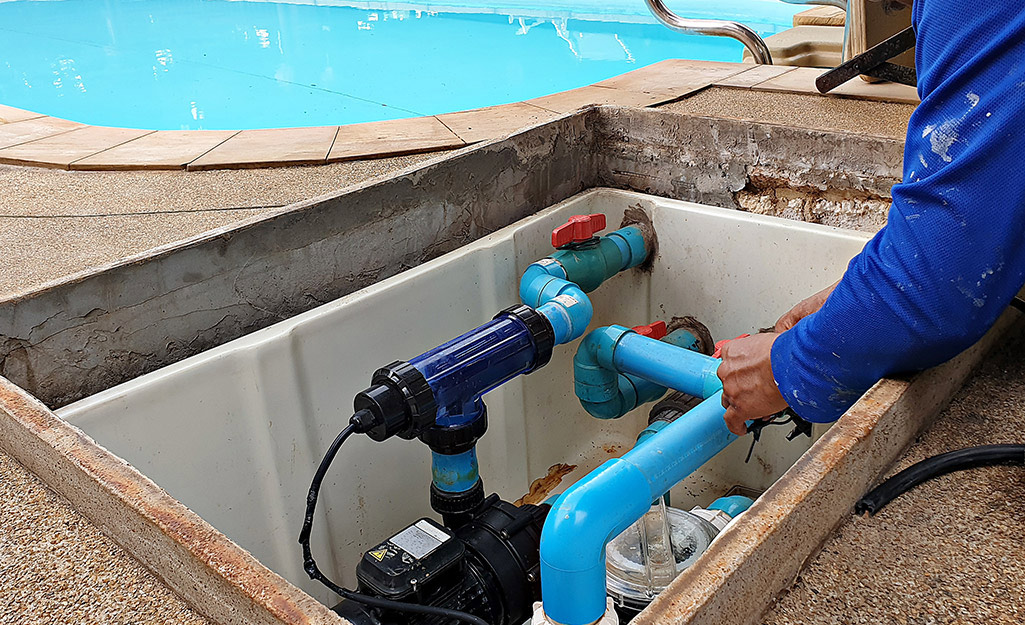
After putting the new pump in place, you may want to wire the pool pump before attaching the plumbing. After the plumbing is installed, your access to the pump motor may be limited.
- Turn off power at the home circuit breaker.
- Confirm the voltage requirements. Above-ground pool pumps usually come with a cord to plug into a grounded outlet and are 115 volts. In-ground pool pump motors are shipped at 230 volts but can be switched to 115 volts.
- Check to make sure the power is off with a non-contact voltage tester. Use a screwdriver to unscrew the cover of the back end of the motor.
For safety, use insulated tools for wiring. - Feed the three wires through a conduit fitting and into the back of the motor of the pool pump.
- Connect the power wires to the power terminal and connect the ground wire according to manufacturer’s instructions.
- Replace the motor cover with a screwdriver. Restore power at the circuit breaker.
How to Install a Pool Pump
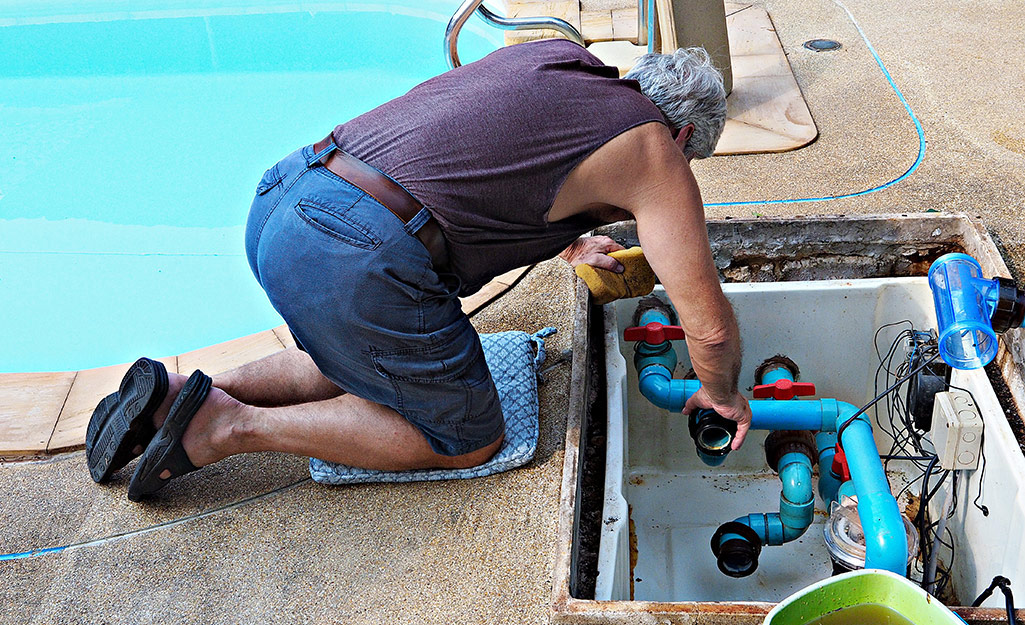
Choose a new pump that has appropriate horsepower and pump flow rate for the size of your pool. Using the right size pool pump helps it work more efficiently, saving energy.
Ideally, the new pump will be the same size as the old one. If the size of your new pool pump is not an exact match, you’ll need to adjust the height of the plumbing lines.
- Determine the size and location of the new unions, PVC fittings and possible o-rings you’ll need.
- Attach new PVC pipe to the plumbing lines as needed.
- Attach thread seal tape to the unions to ensure a tight seal.
- Using PVC primer and cement, attach the unions to the front inlet and back discharge port and then to the PVC pipes.
- Allow the glue to dry according to the instructions on the package. It may take the glue 8 hours or more to dry.
- If required by the instructions, prime the pump. This can involve removing the housing for the basket, filling it with water and replacing the lid.
- Secure the pump with anchor bolts as needed.
- Open the water valves to the inlet and outlet pipes.
- Turn on the power.
- Check the water flow to confirm that the pump works properly.
Pool Pump Repair Tips

It’s helpful to know some basics of pool pump repair in case your pump begins leaking or malfunctioning.
- Always turn off power before opening your pool pump to avoid the risk of electric shock.
Once your turn power off at the breaker box, check the wires with a non-contact voltage tester. - Make sure the pump basket and filter are clean.
- Follow all manufacturer’s instructions that involve taking apart your pool pump. Use a copy of the owner’s manual as a reference.
- If the pool water pump is leaking, check the manifold, threaded connections and winterization plugs.
- Use a wrench to remove the nuts and separate the housing.
- Expose and inspect the impeller and replace it if it shows signs of erosion or heat damage.
- After removing the impeller and the seal plate from the motor, inspect the shaft seal.
- Clean the seal assembly and replace seals or pump parts that appear worn or damaged.
- Reassemble and tighten the pool pump components.
While installing a pool pump can be a DIY project, you may prefer to hire someone to do the job, which involves both wiring and plumbing. A pool service can help install a pool pump and a filter. Whether you put it in yourself or not, having an energy efficient pool pump can help keep your pool well maintained.
Ready to get the right-sized pool pump for your swimming pool? The Home Depot delivers online orders when and where you need them.

